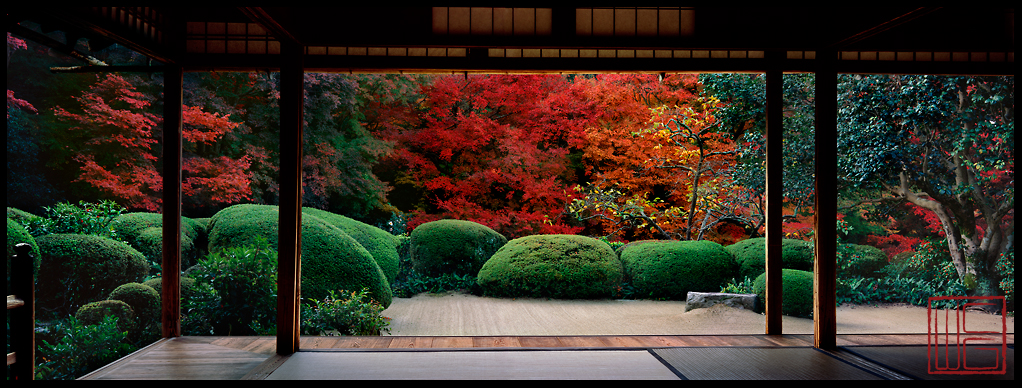
19 Feb A late Colorado photographer’s visions of Kyoto come to Denver
Like most countries including the U.S., Japan is struggling with the spread of the Omnicron variant of covid-19. Aside from its internal battles to vaccinate and provide boosters to Japanese, the country’s pretty hardline solution to help manage the pandemic has been a strict blockade of foreigners entering its borders – even foreigners with resident visas and students. Never mind that the situation has been a terrible stress for a lot of people who already live there but happened to be traveling outside the country before the lockdown, but it’s also been frustrating for people like me: Tourists.
I love traveling to Japan, as I’ve written before. I especially think Japanese Americans should go there, because you’re sure to feel deep connections and find parts of you that you didn’t even know you were missing. Never mind whether you can speak Nihongo or not – most Americans can’t, yet many Americans travel to Japan who aren’t JA and get around just fine.
I miss going to Japan. The last time I was there was in the fall of 2019, mere months before covid shut everything down.
I’ve missed Japan so much that I’ve been thinking about an American photographer, William Corey, who also loved Japan and found his life’s artistic calling there, shooting gorgeous, enormous photographs of gardens in Kyoto. Specifically, zen gardens at Buddhist temples that reflect the awesome peace and tranquility that is part and parcel of Japanese aesthetics.
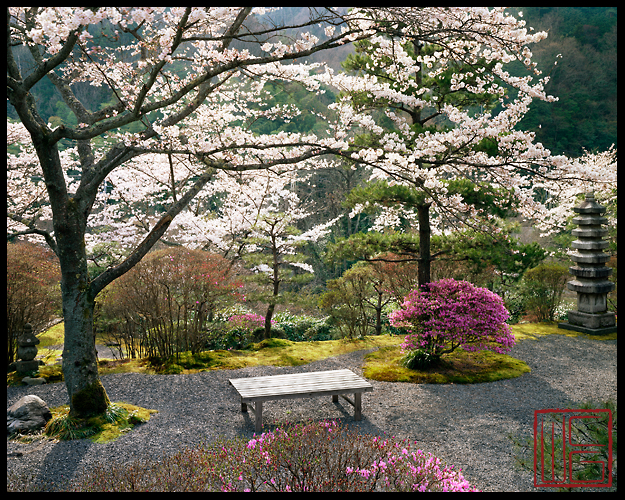
He was inspired to shoot photos of gardens in Japan after seeing a PBS show about them in 1974. He traveled often to Japan, and met and married Reimi Adachi, who today is the executor of his estate and dedicated keeper of his artistic legacy. Corey died in 2008, from cancer.
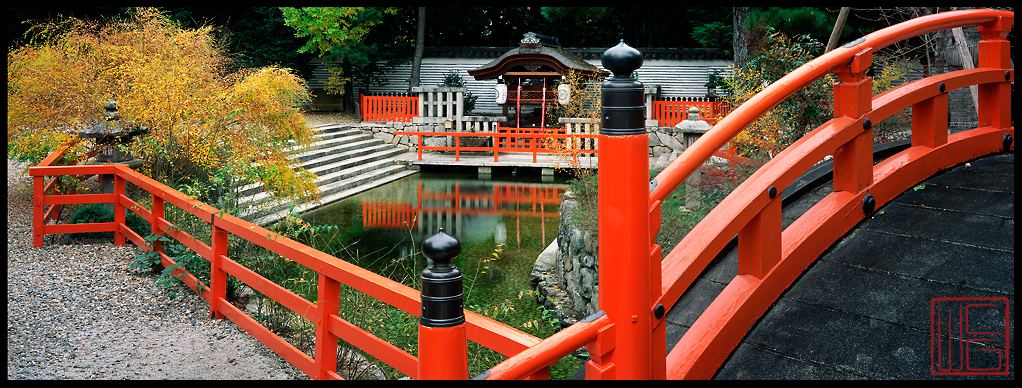
What made his art so special? Corey was an old-school photographer, and I don’t mean just that he used film and not digital cameras. When Corey saw the detail and majestic intricacy of a classic Kyoto garden, he realized that just using a 35 millimeter camera wouldn’t do the subject justice. Nor a typical “large format” camera that used 4×5 or even 8×10 inch sheets of film. Corey found an antique “banquet camera” from the early 20th century that was designed to shoot large group pictures of people at – you guessed it – banquets. It used a wide angle lens to capture everyone, and held sheets of film that were 8×20 inches.
“He made large visual paintings with light, lenses and film and he controlled every element, like putting a brushstroke on a canvas.”
The camera was a wooden contraption with a black leather bellows perched on a wooden tripod with a black shroud that draped over the photographer, like a stereotype of a long-ago camera (which it was). Corey worked with it to figure out the best exposures to get all the details, the color and lighting he envisioned for every image. That image, by the way, appeared upside down on the back of the camera, so he had to know exactly what he wanted in the frame, and adjust the camera just so, until his composition was perfect – while the image he saw was inverted. Then he would uncover the lens and expose the film for 20, 30 minutes or more. If the light or weather changed or someone inadvertently walked through the scene, he would cover the lens and wait then uncover it again. It was precise and painstaking.
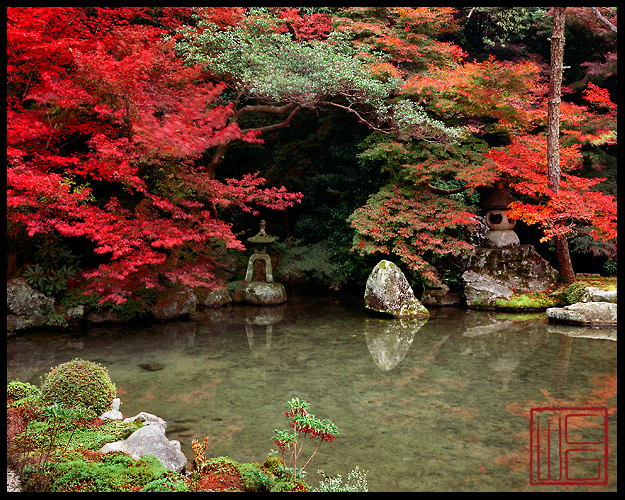
Most people think of photography as a one-to-one process, a person with a machine. You have something in front of the camera and then through magic, it’s printed. It used to be black and white. Then it was color, and you can adjust the color, but you basically get what was seen. Corey was an artist who thought of photography as a form of painting. The time he took, the deliberation, the intention and attention to every detail – that’s how Monet or some other traditional landscape painter might work to produce a large painting. Corey approached photography that way. He made large visual paintings with light, lenses and film and he controlled every element, like putting a brushstroke on a canvas.
The effort shows in his work, which is now – thanks to the persevering efforts of Corey’s widow Adachi and the couple’s friend and fellow photographer John Einarsen, a Lakewood Colorado expat (and a fellow alumnus of my Alameda High School) who’s lived in Kyoto for decades – under the care of the Department of Special Collections and University Archives for the University of Massachusetts, Amherst Libraries. Einarsen is the founder and editor of Kyoto Journal, a literary and art publication and he’s been in exhibits with his own photography. Here’s a lovely three-and-a-half minute video from Adachi’s William Corey Gallery that pays tribute to Corey’s gorgeous art.
Adachi’s indefatigable determination also led to Corey’s first-ever gallery exhibit in Kyoto last year. And now through May 1, some of Corey’s best pieces are on display at the City of Denver’s McNichols Building Arts & Events Center in Civic Center Park in a second-floor exhibit, “Zen Gardens from Kyoto to Denver.” Reimi Adachi will participate in a virtual discussion about the work on March 7 in the gallery. After the exhibit the work will become part of the city’s permanent collection of art.
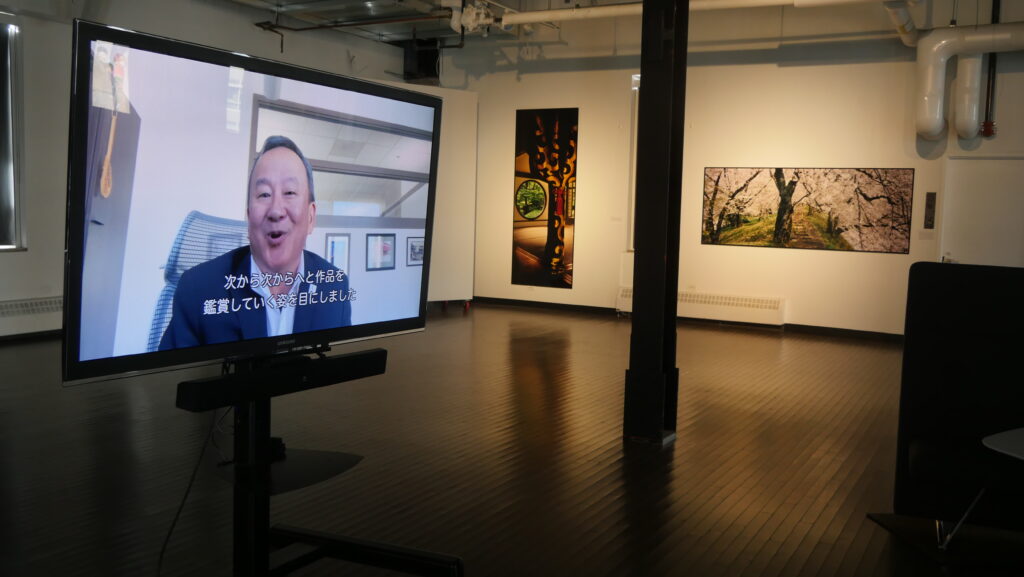
A few years back, when United Airlines launched a direct flight between Denver and Tokyo with support from the city, Corey’s photos were out on display at Denver International Airport to celebrate, and they were glorious. One of the best Japanese restaurants in the Denver area, Izakaya Amu in Boulder, has Corey’s work proudly hanging on its wall and it enhances the artistic level of the cuisine.
Anyone who loves Japan, gardens or photography should visit WilliamCorey.com, the online repository of some of the artist’s work, which is maintained by Adachi. It’ll make you want to visit Japan. Really.
Here’s the video that accompanies the exhibit at the McNichols Building (it’s 28 minutes long):



